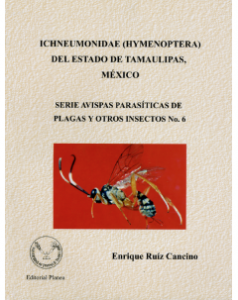ICHNEUMONIDAE (HYMENOPTERA) FROM THE STATE OF TAMAULIPAS, MEXICO: SERIES PARASITIC WASPS OF PESTS AND OTHER INSECTS No. 6
Synopsis
The Mexican Republic is in a privileged place. Its territory includes part of the Nearctic Region and part of the Neotropical Region, where floristic and faunal components of both regions occur. Most of the main plant communities of the American Continent are present, as well as many groups of animal species with northern and southern affinities. Therefore, our country occupies one of the first 10 places in the world in relation to plant and animal diversity.
The scientific study of the Mexican entomofauna has been carried out for more than a century, especially in some groups of butterflies and beetles. For its part, the study of parasitic wasps (Order Hymenoptera) has not been adequate, due to its small size and the large number and similarity of its species: there is no estimate of the total number of Hymenoptera species (wasps, ants, Mexican bees) but it is possible that they are more than 10,000.
The Ichneumonidae family was formally studied in Mexico in the nineteen-seventies by Cresson, who described 307 new species. Subsequently, Cameron, Dasch and Gauld described many more. An important reference is that of Townes and Townes (1966), who included 535 species from Mexico in their Catalog of Neotropical Ichneumonidae. From the summer of 1981, the author of this work began to study the ichneumonids of Tamaulipas and other states of the country.



